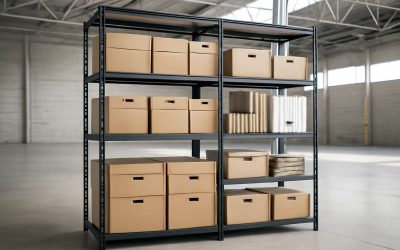Cleanliness isn’t just next to godliness in warehouses – it helps productivity. But workers may be confused about the best ways to store and access inventory and other materials. A little understanding of the differences between shelving and racking can help them make better choices.
Shelving typically holds small and lightweight products that can be easily picked up or moved by hand. Racking, on the other hand, stores larger boxes or pallets of goods. Depending on the type of storage, it may need to be accessed by machines such as forklifts or mechanized systems that move products down to ground level. Racks that are accessed by machine must be tough enough to support tier upon tier of heavy materials and to withstand impacts from forklifts.
The best racking and shelving suppliers provide options for almost any warehouse application. A warehouse needs to examine its product line and the density, weight and delivery frequency of each to determine what type of storage is needed. This information can then be used to choose between longspan racking, push back or drive-in racks and more.
Longspan racking offers the highest levels of capacity and storage densities. Its stacked design reduces aisles and increases space utilization. It’s a good choice for e-commerce and logistics operations that require high-density storage. Pushback racking offers less flexibility but still allows for high-density storage. It’s a good option for distribution centers that handle a wide variety of products.
Steel King offers the industry’s broadest selection of rack types, including roll-formed and structural pallet racks. It also supplies a full range of accessories, such as rack-end and column protectors, and has a team of engineers and a fabrication shop. Its solutions include automation integration, multi-level pick modules, and cantilever racking.
Quality Material Handling (QMH) provides a complete line of storage and mezzanine systems, including boltless shelving and rack-supported mezzanines. Its engineering staff can provide solutions that meet the specific requirements of any warehouse environment.
A warehouse should consider the specifics of its facility, such as interior ceiling height and column spacing. It should also be aware of any specialized needs, such as cold warehousing or FDA compliance for foods. For example, cold warehousing environments are usually required to maintain a certain amount of vertical separation between each row of racking, and food-grade conditions mean that pallets must be kept at least 12 inches off the floor.
A warehouse may also consider using a mezzanine system in order to take advantage of otherwise unusable space. It may require some customization, but can be an economical solution for a growing business. A supplier such as Store Fixtures, USA can offer a wide assortment of new and used equipment for this purpose. Its website includes a market sorting tool that makes it easy to locate the right racking or shelving for any application. The company’s inventory is scattered across numerous warehouses nationwide, which speeds up shipping and often means that equipment can be shipped from a warehouse close to yours.



0 Comments